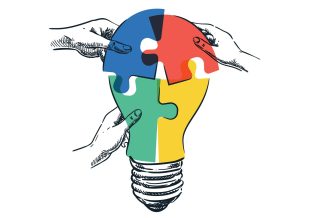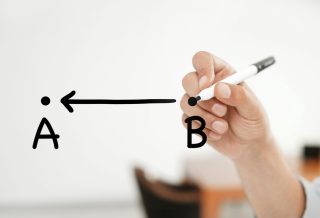FOCUS
How Alhambra is building a learning system around the standards
By Angela Frankenfield
Categories: Collaboration, Continuous improvement, Fundamentals, Implementation, Learning communities, Learning designs, Learning systems/planning, Standards for Professional Learning, System leadershipJune 2022
The Alhambra Elementary School District in Phoenix, Arizona, has recently begun to dig deep into implementing Standards for Professional Learning across our 18 schools, which serve over 10,000 students in preschool through 8th grade. Our experience shows how the standards can drive a comprehensive approach to professional learning across a system so that all educators engage in high-quality learning and improve practice for the benefit of all students.
Our journey with the standards began in 2017, when I and other district leaders attended Learning Forward’s Annual Conference and learned about designing and implementing a districtwide comprehensive professional learning system. As I got more involved with Learning Forward and participated in the Learning Forward Academy, I discovered how the standards can drive the design of a professional learning system and be used to monitor and evaluate the impact of that system on staff and ultimately student learning.
Since that time, Standards for Professional Learning have become a critical component in Alhambra’s direction for professional learning and in improving teaching and learning. We use the standards to shape and guide our planning and professional learning design, and we embed them in meetings and learning opportunities for district-level directors, specialists, and coaches to ensure they integrate them throughout their work across the district.
Our experience suggests steps districts can take to implement standards and improve professional learning for all educators — and that these steps pay off.
Standards integration in our district
In Alhambra, continuous improvement processes drive the growth and development of our schools. We use cycles of planning, implementing, monitoring, and evaluating in all of our work, including professional learning. Standards for Professional Learning help us articulate how those cycles work and what components they include.
Our planning process begins with intentional learning designs based on research, educational theories, and proven models. We recognize that professional learning is a critical component in this process, and we use the standards to ensure we have designed learning outcomes and opportunities that research and best practice show impact teacher efficacy and student learning and are matched to the needs of our staff.
As our district leadership begins to outline and plan our professional learning plan for each upcoming school year, we reflect on our current reality, goals, and needs. The Standards for Professional Learning Innovation Configuration maps, which specify high-leverage, role-specific actions educators can take to implement the standards, are a critical tool in this process.
At the implementation stage, the standards help us facilitate effective professional learning communities (PLCs), which are central to our professional learning strategy. The professional learning communities allow our educators to reflect on their practice while building collective ownership of student learning through a cycle of continuous improvement. The standards provide the direction for job-embedded PLCs and the criteria for monitoring their impact on adult behavior and student learning.
We use multiple sources of qualitative and quantitative data to assess student and adult impact. As we develop any program or initiative in Alhambra, it is imperative that we ensure the program is evaluable, so our team at the district level identifies a process for measuring impact as soon as the plan for the initiative is designed.
Learning Forward’s standards, and the Innovation Configuration maps that accompany them, provide guidance on the outcome goals and how to reach them, across roles and across the progression of learning for educators, from preparation programs to leadership development. Having clearly defined outcomes provides the clarity to monitor where the district is in the standard and provides direction as to where additional touchpoints should be applied. (See box below for an example of how this process works.)
Getting started at the district level
While implementing a comprehensive professional learning plan is complex, starting to implement districtwide use of the standards doesn’t have to be. Think about starting small. Based on our district’s experience with the standards, I recommend the following steps and strategies.
“While implementing a comprehensive professional learning plan is complex, starting to implement districtwide use of the standards doesn’t have to be.” Share on XFirst, make the standards visible in your district — for example, by adding the standards to your district website, listing the salient standard or area of focus to meeting agendas, and sharing Learning Forward’s standards resources with your professional learning and administrative leaders.
Second, build capacity around the standards in small but significant ways. This starts with building your own awareness of the standards and then communicating it to others. You might build a five-minute standards update into professional learning, label the standards as you integrate them into professional learning communities, and take other steps to help your staff understand and use the standards.
Third, apply the standards to your specific projects and initiatives. Every new initiative requires some form of capacity building and professional learning. You can use the standards to develop a sound framework for those development opportunities. You can also use the standards in shaping criteria to evaluate the project or initiative.
Building state-level collaboration
To make the most of the standards, districts should collaborate not only with their local schools but also with state-level leaders and entities. The state of Arizona has adopted Standards for Professional Learning, which positions districts like ours well to work closely with the state Department of Education to implement and advocate for high-quality professional learning as a lever for change in our school systems.
To make the most of the standards, districts should collaborate not only with their local schools but also with state-level leaders and entities. #Stand4PL Share on XDistricts in states that have not yet adopted the standards might consider reaching out to contacts in the state education agency to discuss the opportunities the standards create for improving teaching and learning.
Learning Forward’s state-level affiliate organizations are also a valuable resource. They can help districts and schools build knowledge about the standards and capacity to implement them, as well as introduce educators to leaders from other districts who are engaging in this work.
Networking and events hosted by Learning Forward Arizona, our state affiliate, have been very helpful for us in Alhambra. Every networking event was developed with a salient standard guiding the learning, which helped us see examples of how the standards are applied and continued to build our awareness of the specifics of each standard. The affiliate has also been instrumental in providing explicit learning opportunities about the standards themselves.
A pressing need for guidance
Implementing a systemic approach to high-quality, job-embedded professional learning guided by Standards for Professional Learning is more important than ever. Over the last two years of the COVID pandemic, educators have faced overwhelming challenges and needs for new learning.
During this time of uncertainty, many educational leaders and systems have struggled to keep up with those learning needs — or, conversely, have unintentionally added to the burden with fragmented or ineffective professional learning. As we all strive to move forward from the stress and trauma of the pandemic, the standards provide the guidance and direction to create relevant and high-impact learning for educators of all levels.
Download pdf here.
Case study: Alhambra mentoring and induction program
One of the ways Standards for Professional Learning have shaped professional learning in our district is in the evolution of Alhambra’s mentoring and induction program for new teachers. I examined this program through the lens of the standards as part of my participation in the Learning Forward Academy, a 21/2-year learning experience dedicated to providing leaders with opportunities to progress through a problem of practice model.
As I examined the program and my chosen problem of practice to see which standard it was most aligned with, I focused on the Implementation standard. By going into depth about this standard with my peers and Learning Forward Academy coaches, I realized that we had a lot of work to do to improve the program’s implementation.
I examined the Innovation Configuration map for the Implementation standard, which spells out action steps for each of the standard’s desired outcomes and allows the user to assess their level of progress toward each outcome.
I realized that, for many of the desired outcomes, our implementation level was lower than it needed to be because I had not built my staff members’ capacity sufficiently, for example, in the outcome of understanding research on change processes. However, I did notice an area of strength outlined in the Innovation Configuration map: constructive feedback.
Based on this review and reflection, my next step was to incorporate capacity building into our professional learning plan for everyone involved in the program, including new teachers, mentors, and administrators. I also recognized that I needed to look beyond the two years of implementation I had planned for the Alhambra mentoring and induction program and expand the plan for capacity building to an additional three years. In addition, I came to see a need to improve the support we offered to our coaching staff about how to support new educators.
These changes have made a difference for the program, and we are now more prepared to welcome new educators to the district in a way that will have long-term impact. The assessment and reflection of the program’s implementation through the use of the standards and Innovation Configuration maps has been critical in this process.
Categories: Collaboration, Continuous improvement, Fundamentals, Implementation, Learning communities, Learning designs, Learning systems/planning, Standards for Professional Learning, System leadership
Recent Issues
LEARNING DESIGNS
February 2025
How we learn influences what we learn. This issue shares essential...
BUILDING BRIDGES
December 2024
Students benefit when educators bridge the continuum of professional...
CURRICULUM-BASED PROFESSIONAL LEARNING
October 2024
High-quality curriculum requires skilled educators to put it into...
LEARNING TO PIVOT
August 2024
Sometimes new information and situations call for major change. This issue...












